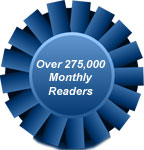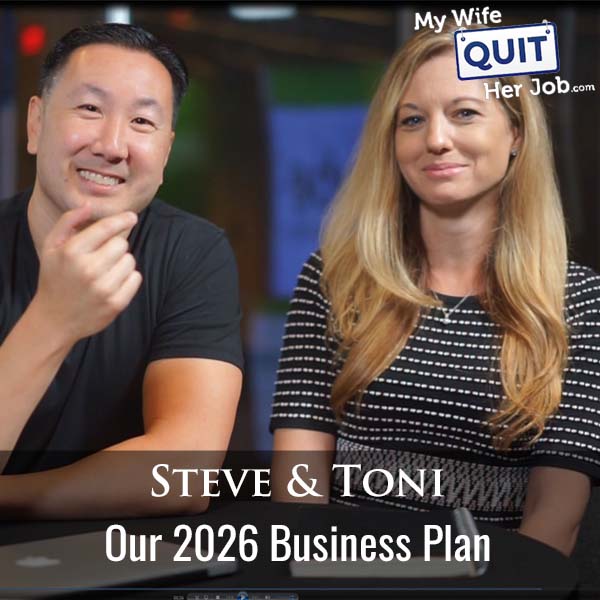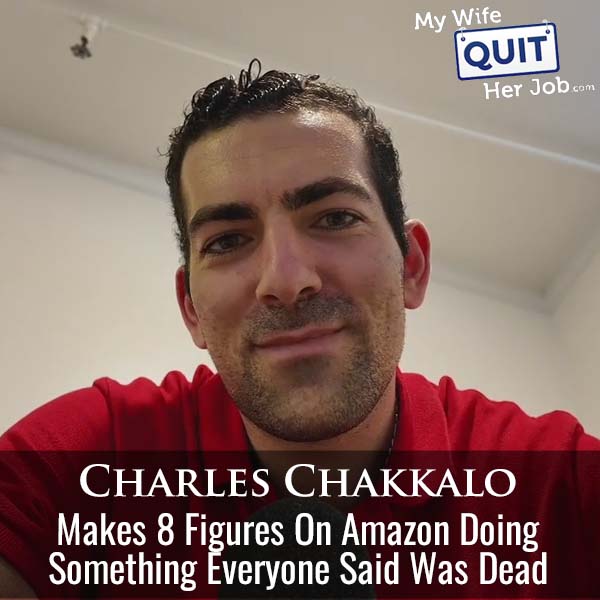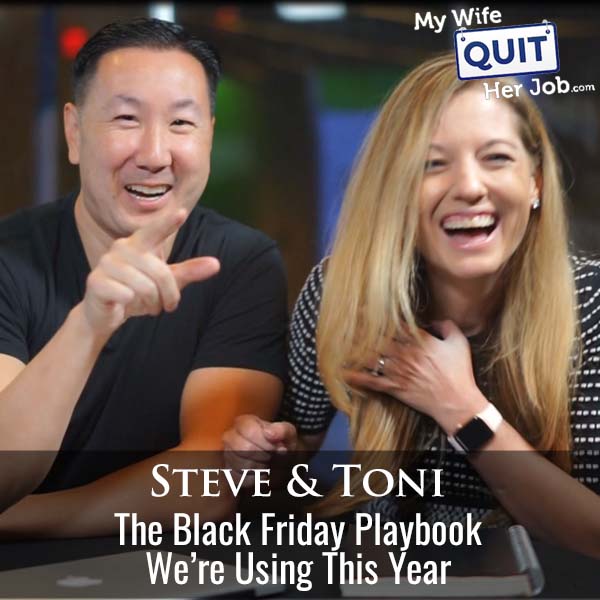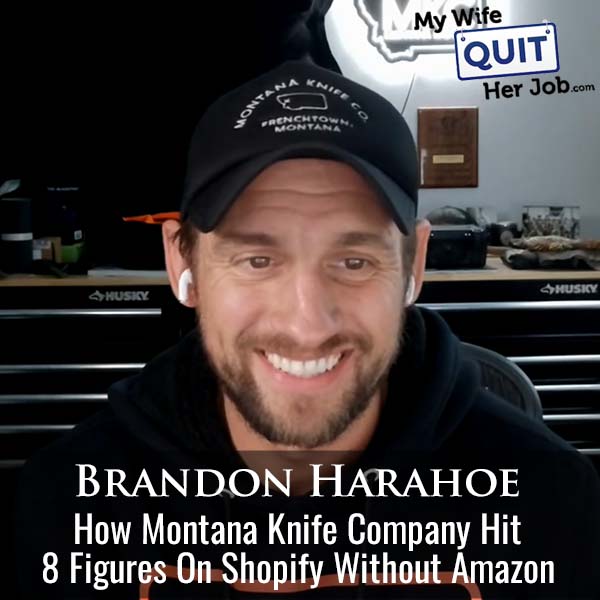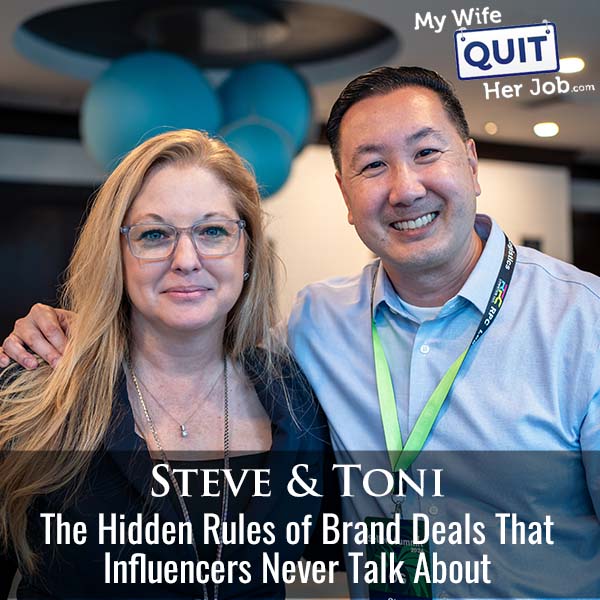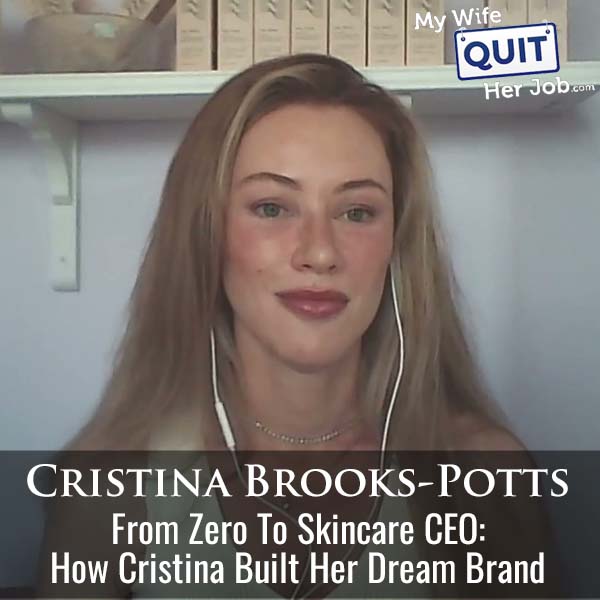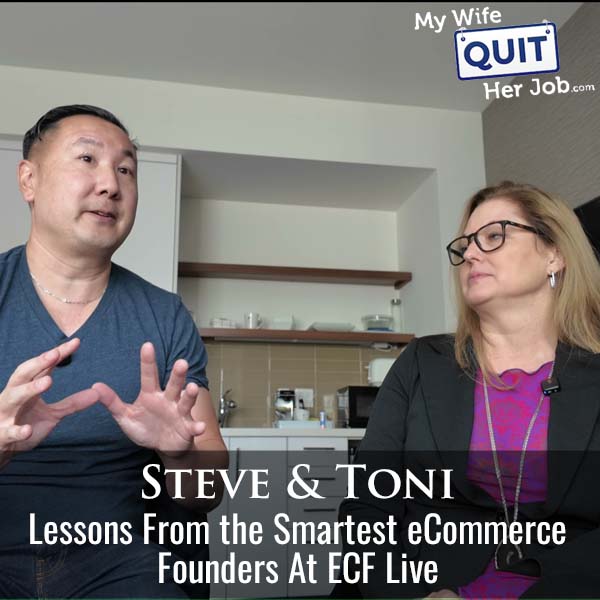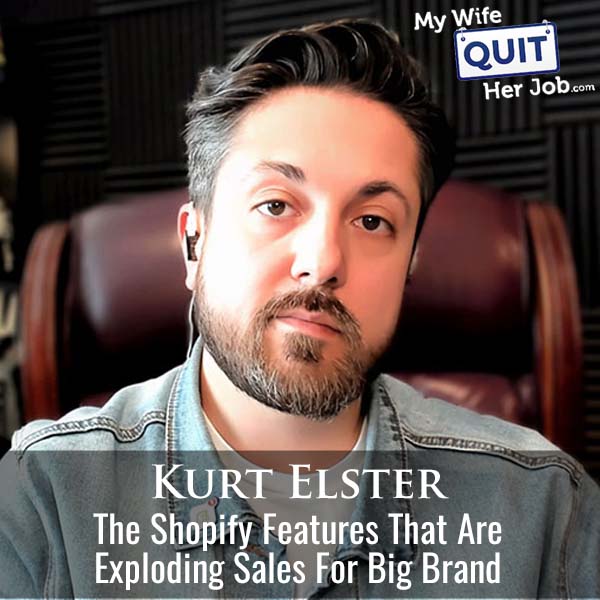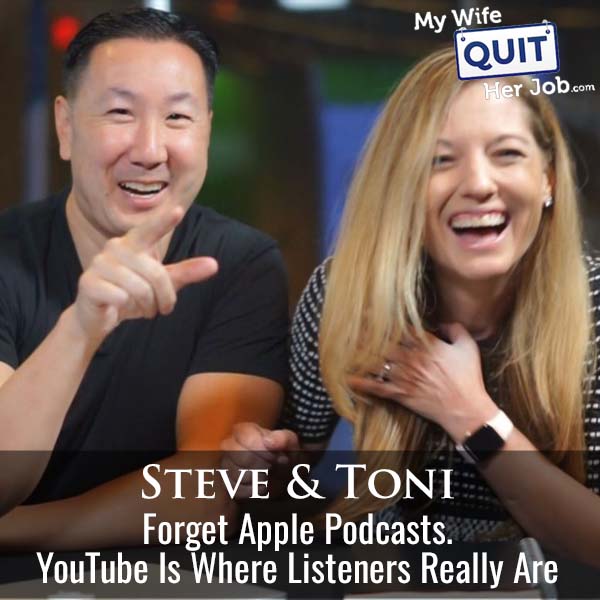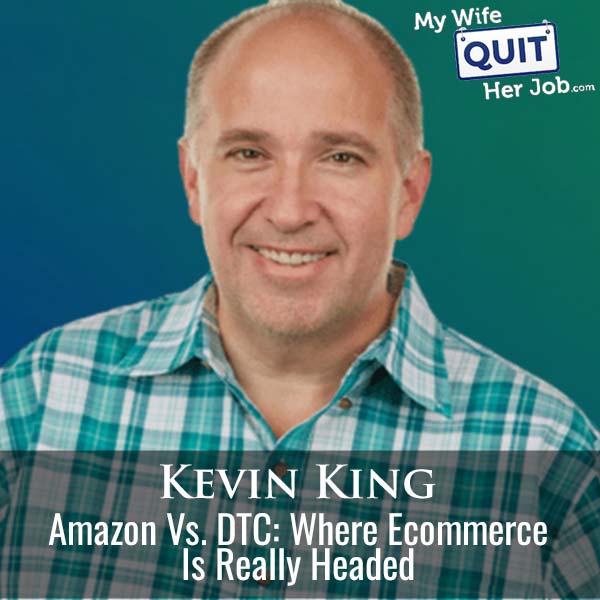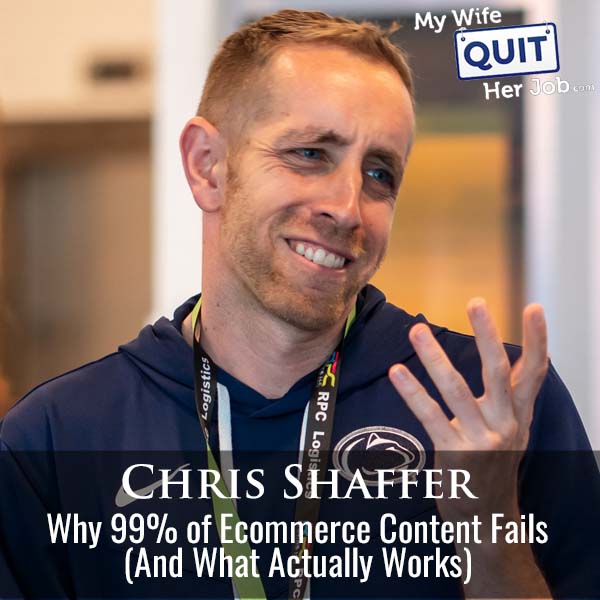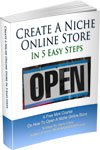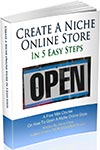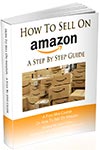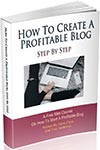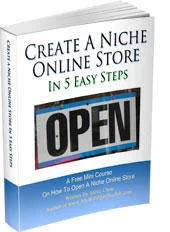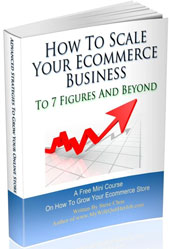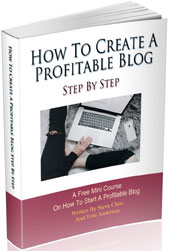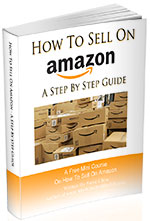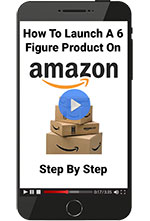Podcast: Download (Duration: 46:00 — 52.9MB)
In this episode, Toni and I break down our plan for 2026 and why it looks very different from this past year. Instead of chasing every new opportunity, we’re focusing on the few decisions that actually move the needle and the tradeoffs we’re making.
What You’ll Learn
- Get The Lowdown On Our Goals For 2026
- Toni’s Vision For Growth
- Steve Plan For The New Year
Sponsors
SellersSummit.com – The Sellers Summit is the ecommerce conference that I’ve run for the past 8 years. It’s small and intimate and you’ll learn a ton! Click Here To Grab The Recordings.
The Family First Entrepreneur – Purchase my Wall Street Journal Bestselling book and receive $690 in free bonuses! Click here to redeem the bonuses
Transcript
Welcome back to the podcast, the show where I cover all the latest strategies and current events related to e-commerce and online business. Now in this episode, Tony and I break down our plan for 2026 and why it looks very different from this past year. Instead of chasing every new opportunity, we are focusing on the few decisions that actually move the needle and the trade-offs we’re making. But before we begin, I want to let you know that tickets for Seller Summit 2026 are now on sale over at sellersummit.com and the price does go up on January 7th. And if you sell physical products online,
00:29
This is the event that you should be at. Unlike most events that are filled with high level fluff and inspirational stories, Seller Summit is all about tactical step-by-step strategies you can actually use in your business right away. Every speaker I invite is deep in the trenches, people who are running their own e-commerce stores, managing inventory, dealing with suppliers, and scaling real businesses. There’s no corporate execs and no consultants. Also, I hate big events, so I intentionally keep it small and intimate.
00:54
We cap attendance at around 200 people so you can actually have real conversations and connect with everyone in the room. We’ve sold out every single year for the past nine years and I expect this year to be no different. It’s happening April 21st to 23rd in Fort Lauderdale, Florida. And if you’re doing over 250K or $1 million in revenue, we also offer a private mastermind for high level sellers. Right now, tickets are the cheapest they’re ever gonna be and the price is going up on January 7th. So if you want in, go over to sellersummit.com and grab your ticket.
01:29
Welcome back to the My Wife Quitter Job podcast. I can’t believe it, but we’re already at the end of the year and it’s time to start thinking about 2026. I can’t believe it. I feel like we’re a little late thinking about 2026. It is November that we’re recording this. Correct. It is November, but I don’t know.
01:51
I actually don’t usually plan that far ahead to be honest with you. I usually have very high level goals. I know you have every minute of every day planned out, right? I don’t. Well, yes. As a type A person that I am, I usually have things well more under control by this time in November. But this year, I feel like just went too quick. I don’t know. Maybe that’s just me, but I feel like it’s hard. It’s like I blinked and now we’re in November and that’s it.
02:19
So one thing that I was excited about was, uh did you see that announcement of the robot? Like it was a video of a robot that like, it’s like the first edition that’s supposed to come out next year that can Does your dishes? Yes, yes I did. I thought that, I honestly thought that was a joke. I didn’t think that was real. Is that true? I think it’s real. Okay. And I watched it I’m like, okay, we got a long way to go. I still need to get my kids to do chores. I don’t want to hire a robot. oh
02:48
Yeah, I’ll be interested to see that. I’m not buying one. uh Well, no, the reason why is because I’ve been really excited about this revolution coming. Can you imagine just uh having robots pack orders for you, run the sewing machines and everything, and you just walk in, you just make sure they’re still running. You squirt some oil in their joints and whatnot.
03:12
Do you really see that as how, I’ve, reminds me of the Jetsons, right? I feel like we’re sort of living in the Jetsons era at this point, but then also, I don’t know, I feel like you got that really fancy printer two years ago or whenever it was, and it was nothing but problems. And part of me wonders if some of these robot type things will also be nothing but problems. Well, the new printer is actually great. Okay. Okay. Yeah. But you know what’s funny? There’s actually this print shop
03:42
literally two minutes away from our office and having them do all the printing is actually the same price as printing it at home. Really? At the office, yeah. Because they do it in bulk, right? yeah, so we’ve been using them a lot. It’s a one day term. It’s funny, right? We don’t even need the printer actually anymore because this print shop is so convenient. But anyways. Yeah. uh
04:10
I don’t know, Elon Musk has been on a bunch of podcasts lately and I don’t know, it seems like we’re like five years away maybe from something. Yeah. Well, I mean, I know that I remember back when I worked with Valpak and Cox, Valpak made a lot of news and this is back in like 2012, 2013. They made a lot of news for basically making their facilities very robotic. So on the floor of the print shop, basically little
04:39
I mean, I guess there were robots, but little machines basically did the bulk of the work, right? I think they only needed uh like one or two people on the floor because everything was the printing, the sorting, the moving of the different things, the enveloping. I don’t know how you say that. all done. Yeah, it was all done robotically. And so I feel like, and I know Amazon uses a lot of robotics in their… uh
05:05
warehouses as well. So I feel like we’ve been on this path for a while. I think what’ll be interesting is if we can bring it into the homes, right? Which is the commercial that I saw with like a robot unloading the dishwasher and stuff like that. Well, it took them five minutes and 30 seconds to load two cups or something like that. Oh, my word. I don’t have time for that. Yeah, exactly. So well, one of the things that I was thinking about for 2026, which is not a robotic thing.
05:32
is that in 2025, one of my goals was to attend more events, which I think I did a pretty good job with. I went to many conferences. I tried to do some networking things. I was actually at a networking thing the other night. I will say though, I’m tired. It’s because you’re old. I am old. am old. networking days are for the young.
06:00
And unfortunately, like I feel like if you live in certain places, like I feel like, you know, Charles who lives in New York City or Liz who lives in Austin, you even who live in California, there’s a lot more opportunity locally for you in Orlando. We definitely have things right. I know I don’t want anyone from Orlando to like send me hate mail. They’re like, you missed all these cool things. But like in the world that I’m in with, I would say more of the marketing tech e-commerce like that’s not Orlando is not a hot spot for that. Right.
06:28
um Whereas I think if you live in Austin, pretty much any event that you go to is going to be people that are in your industry and you’re going to be able to get some really great networking opportunities. Liz talks about stuff all the time and people she’s met and seems pretty fantastic. So, you that was one of the things that I put for myself in 2025. I feel like I achieved it and I’m tired. I’m tired of traveling. I do have status on Delta now. Thank you. ah But
06:56
Part of me is like, I don’t know if I want to do this again in 2026 because of how much I was gone and feeling like, yes, did it benefit me? Did I meet some people? Did it open some doors? For sure, it definitely gave me some opportunities, but I don’t know if it was worth the investment overall. To me, think podcasting has given me enough interaction, although I am going to some events. Yeah. I think maybe four total for this year, which is more than enough for me. Yeah.
07:26
But yeah, mean, for podcasting, I think that’s the easiest way to meet someone. Yeah, I’ve met a bunch of people. Yeah. So I think for me in twenty twenty six, I’m not sure if I’m to go all out on events again. I think I will still go to the ones that I really value. Obviously, I’ll be at Seller Summit, guys. Thanks. See you there. ah But, you know, ECF, I feel like that’s always a great networking event. It’s good. It’s also good to see friends and things like that. Yeah.
07:52
I have some tickets to some other things. I’m not sure if I’ll go. bought the super early bird tickets. I never feel bad if I don’t use them because they were 100, 200 bucks or something like that. But I also was thinking about instead of focusing on attending events, maybe only attending events that I’m going to speak at. So applying to speak at events. then I feel like the return can really be measured.
08:19
When you’re, when you’re going as an attendee, which I think, you know, especially if you’re new or wanting to make those connections, going as attendees actually really important. I’ve been doing this for 20 years. Like, um, I don’t think I necessarily benefit as much as being an attendee, but I think getting on stage is actually really beneficial to your business. If, especially if you’re doing the things that like we’re doing, um,
08:42
That’s one of the considerations that I have. just submitted my application for not only PetSummit, which I’ve spoke at for several years, but the Global Pet Expo, which is all the big time, um like Purina and all those things. Now, obviously I’m not in the pet space, but I submitted to talk about email, email marketing, retention marketing, things like that. For me, I think for 2026, if I’m going to attend an event, I want to have some part of the event, whether it’s
09:11
like a round table leader or speaking or something of that nature, I think for it to be worth my time in the coming year. I agree. I 100 % agree with that. uh For me, with the AI stuff that I was getting to, so I already started working on this, but there’s a Bumblebee bot now. I was just telling Leslie Samuel that you were building this.
09:37
Well, it’s already done, but like for some reason, like it works for me, but for some reason when I gave it over to Jen, like it stopped working. So basically what it is is it has access to like all of Bumblebee’s databases, everything. So you can say, oh, what items do I have like less than 10 days worth of inventory left? And it goes and it calculates how much it’s been selling for whatever and it tells you how many days of inventory are left so you can reorder. Or it tells you like, oh, what
10:05
what’s the top selling product for the last 30 days or whatever? Basically you can ask it whatever question you want. It formulates the right database query and tells you the answer. I was really excited about it. then, know, Jen types her queries in a different way, you know, and then it doesn’t, right? So, but anyway, I want to incorporate more AI and get rid of paper.
10:32
at Mullenby Linux. Yes, I know the get rid of paper has been a big thing for you. I don’t know. Do we even talk about this on the pod? oh No, we talked about it personally. OK, we talk about personally. I feel comfortable talking about it on the pod. So Jen just went to Korea on a girls trip and whenever she leaves, I go into the office pretty much every day. Usually I’m not in the office for everyone listening. Like I go in maybe one day a week if necessary.
10:59
But with her gone, this time uh whenever she leaves, like I’m the new sheriff in town. So I go in and I just kind of shadow the employees and see what they’re up to. And I just look for inefficiencies because when you’re in there all the time, you do things a certain way and it gets the job done. it might not, anyway, uh I just noticed that we rely on paper for pretty much everything.
11:28
uh If an invoice, for example, drops on the floor and goes underneath the table, then sometimes that order gets lost. Not lost, but it might not get packed. And people call in all the time, change up their orders, change up their addresses and all that stuff. And it’s just been marked on a combination of paper and slack. So while she was gone,
11:57
I implemented a more centralized system of tracking all this stuff and everything, which I’m happy actually, we’re 75 % using it. Nice, nice. And I didn’t, maybe it’s because Jen was just so happy from her vacation. Like I didn’t get a whole lot of flack for it. Although it was pure chaos for like the first two days after she got back. Yeah. Yeah. How did the employees take it? Were they on board?
12:23
Of course they’re on board because it was based on their feedback. I went in there and I said, well, what’s inefficient? Why are we, what’s that in your hand? She’s like, this, it’s a piece of paper. I’m like, drop it. Drop that piece of Put it down. We’re not using the paper method anymore. That leads me to another thing that I actually talked about this in my mastermind a couple of weeks ago.
12:49
One of the things that I really wanna focus on in 2026 is basically learning how AI can help me move forward the projects that I’m doing. um I feel like, and I’m sure a lot of people feel this way, things are moving so quickly, it feels very difficult to keep up. If you are not taking an action or getting involved in it every single day, it feels like if you…
13:15
take two days off from AI, everything has changed. And I’m exaggerating a little bit here, but I feel like, you know, it’s like an ocean wave and you’ve got to like paddle as hard as you can to catch the wave, right? So that’s something that I really want to focus on in 2026, because I do feel like, I feel like it’s kind of like the haves and the have nots, right? There are still, and we see this a lot in our webinars, I actually encountered it with uh another person that I work with a couple of weeks ago.
13:45
There are people that just think AI is absolutely terrible, right? No one should be using it. It’s detrimental. The one person that I was interacting with who I know does not listen to this podcast, like kind of went off and was like, it’s plagiarism and this and that, and kind of had this whole soapbox. And I was like, uh I can see why you believe that, but I don’t think that’s true. And I think that it’s doing a lot of really cool things. In fact, I just saw a thread in ECF where this guy basically built this
14:13
automation to track social media posts, right? Because before that they had been tracking it on a spreadsheet and obviously like, especially other mentions from other people. And he basically built this free tool that he’s giving out to people and it’s like, hey, this distracts your social media. And I was like, heck yeah, right? And I feel like there are a lot of uses like that where, uh like you were saying, you went in and you were like, hey,
14:36
what’s the pain points? What’s the problems? I feel like there’s a lot of things in all of our businesses that are just very repetitive tasks that can be automated and probably automated with more accuracy, right? Than people copying and pasting into spreadsheets or writing things on a piece of paper. So one of my goals for 2026 is to really focus on how to best use it for the things that I’m working on. I realize there are a million use cases and I think that’s the danger, right? As you get kind of…
15:05
rabbit-trailed into all the different things. one of the things I think is so cool is all the animations with AI. I think that’s so fun. um Dana Michelle is crushing it with this. But ah I don’t need that for my business. So as much as I think that’s cool, I need to step away from animate. I’m not doing a lot of that, but I can’t get sucked into it. I need to focus on the parts of it that will help me and what I’m doing.
15:32
but I really wanna have that be one of my main focuses for 2026, personally but in business. You know, it’s funny, you’re right, AI is moving fast, but I don’t feel like it’s moving that fast in terms of what you can actually apply to your business. True. Like everything that I’ve already done, I could have done with like the basic stuff. Like where it’s innovating right now is in all the media, mainly media, I wanna say.
15:59
like the browsers, like Google just announced a browser where you can train it to do what you wanna do. So, I mean little things like that to save time, but in terms of things that move like the bottom line or the top line, uh I think with the current state of AI, there’s a lot you can already do already and you just need to take the time to absorb and not get distracted by like the shiny objects, like making movies. Actually, I wasted like an hour the other night
16:29
making movies. So my son who has a very manual type job, he does not use AI in his job at all. He manages a restaurant. ah But he has been taking… I’m so irritated with him, but I also find it so funny that it’s hard for me to be mad.
16:51
He’s been taking moments from their childhood that have been like slightly traumatic in creating AI animation. So one of the most famous moments in their childhood was when my oldest daughter was babysitting them. You know, this is back when I think we didn’t have as much money. So she made a pizza and when she pulled it out of the like a frozen pizza, when she pulled it out of the oven, it fell on the floor. She picked it up, like put everything back on it and made them eat it for dinner.
17:17
Right. And it was like, still talk about this to this day. Right. So he basically animated this girl who looks like my daughter dropping a pizza from the oven and then slopping all this stuff off. And it’s like, tough luck, kids, you’ve got to eat it. And then the next scene is the rest of the kids all crying and like, you know, there’s like a baby and a teenage boy. It’s like, so he’s been doing that with like all of her, like, fails as a teenage babysitter with them.
17:45
And I was like, surely you can use this for good, son. Like, quit tormenting your sister. But like, that kind of stuff is fun. was like, oh, I kind of want to make those too. But I was like, no, no, no, no, no, no, no, cannot get sucked in. As cool as it is, we cannot be doing that.
18:02
I just wanted to take a moment to tell you about a free resource that I offer on my website that you may not be aware of. If you are interested in starting your own online store, I put together a comprehensive six day mini course on how to get started in ecommerce that you should all check out. It contains both video and text based tutorials that go over the entire process of finding products to sell all the way to getting your first sales online. Now this course is free and can be obtained at mywifequitterjob.com slash free.
18:31
just sign up right there on the front page via email and I’ll send you the course right away. Once again, that’s mywifequitterjob.com slash free. Now back to the show. There’s so many things like I wanna be doing actually, like just for fun. I don’t know. Yeah, so one of my things for 2026 is to launch my community. I’m probably gonna try to do it earlier, but for some reason, like I keep dragging my feet.
19:01
It’s already like 90 % ready to go. I just need to implement like the final payment processing and whatnot. yeah, I don’t know. I’m a little scared because once you turn that switch on, you can’t turn it off. Well, and lucky for you today, which is obviously, you guys will be listening to this much after this happens, Liz is actually going to be talking about building a community and office hours for profitable audience. I’m excited for it because you and I have talked a lot about how
19:30
um Email and SMS, they’re still very effective, but they’re not like they used to be. And sort of that community aspect is, I think you and I both agree that there’s definitely a future in that for building a business, building a brand. And she basically built all of Fluencer Fruit through community, right? The interactions, the building. And so I’m excited for her to talk about, hard is it, right? Like how much work is it? What do you need to do? What can you automate? Because she’s really into automation as well.
19:58
So what can you automate and what’s the manual side of it? And then she’s actually gonna share a lot about Circle, which is a tool that you can use to build. mean, you guys are, we’re on Discord, you use Discord as well. There’s several options out there, but I think it’s good to talk to people about all the different options, because not everything works for everybody. So I think building a community is really hard though. So I’m interested to hear what she has to say.
20:22
Yeah, you know what, ideally what I want to do is I want to build a community of people who already have something going. Yeah. And so we’ll see how that goes. Every time I get excited about the community, I’ll have like a one-on-one with somebody. Like I actually just recently had one, like it was a pretty bad one-on-one. Yeah. Where the person came with no prep and I was like, I really want a community?
20:50
I want a community of people like I want to interact with that. I think that’s the hard part. Yes, you cannot guarantee that in any way. That’s correct. You cannot guarantee that. You should have people I will tell you because I used to do a lot of one on ones years ago. I had people fill out a form and until the form was filled out, I wouldn’t schedule the one on one. And then it forced them at least to show up prepared. I feel like for you and I, when we do our one on ones, everyone is like over prepared. Right. Yeah, for the most part, it’s been positive. Yeah.
21:18
But occasionally you get those people that you’re just like, oh, we should reschedule. Well, so what was funny about this is it sounded like the person was prepared. Like, I want to have a product by the end of this. Yeah. I’m like, OK, great. OK, did you watch the first video? She’s like, haven’t gotten a chance to watch any of the videos yet. Like, OK, so you want me to just give you a product, right? Yeah. That’s not something that you can do in like 30 minutes. No.
21:48
No. Anyway, also not a great idea. Like to me, it’s like if because you and I don’t do one on ones, like you can’t pay for them. You know, they really only come with like signing up through a webinar or earning them through the points in the courses. Like, yeah, I don’t think people understand. Like you will never get this opportunity. You should come very prepared because, know, we don’t we don’t sell these on the side. Like you’re not going to be able to do this. Yeah. Anyway, but I am excited about it because I do think
22:17
that just think about the people who come to office hours. I actually love hanging out with them every week. So I guess the caution here is growing it too large too quickly maybe. And maybe just keeping it small and deliberate and gradually grow it. I think it’s probably the way to go. We’ll see what Liz has to say, I’m curious. Yeah, so one of the other things that I’ve been thinking about, and this was spurred on by my brother sending me a text yesterday. um
22:46
Have you, Steve, seen the OpenAI browser yet, Atlas? Okay, so I’m not using it at all because I heard it’s full of security holes. Oh, interesting. So I’ll let him know. Well, no, because people can embed little directives into their sites that cause the AI to, because it has access to stuff if you give it to it, if you give it access. Yeah, so here’s what my brother did with it, and I’m sure he’d probably just opened himself up to all sorts of issues, but.
23:13
um So he opened up his Shopify site and his brand guide, right? So he has a brand guide created. He also has a Shopify site and basically AI went in and changed all the settings to match the brand. So it basically gave him consistency through the site. um He said it was really slow, but it actually got it done. um And I actually think that’s a pretty cool use case for it. However, if it’s filled with like
23:42
security issues that makes me question it. But I think those types of things that AI will do, one of the things that I’ve just started doing um with AI, which I probably should have done this year ago, is I’m basically running all of our landing pages through AI and just asking for feedback and what can be better, what’s missing, what’s not explained well. Because I think one of the problems, especially if you have a brand and you’ve been running it for a long time, is you don’t see the flaws.
24:08
Right? You already know how everything works together. You already know the pros and cons. So it’s not as obvious to you when you look at your own site. um And so anyway, I think it’s actually, I just run them through chat GPT. So I’m not even using anything fancy, but um I’ve actually gotten some really good feedback from chat, especially on um doing a better job explaining the value proposition for the product. Because chat,
24:35
Chat has so much information about the business. It’s got all the product briefs uploaded. It’s got the product PDFs. It’s got everything that it needs. um And so I think it’s actually been very helpful, but I need to get in the habit of doing that with every page, right, to get the feedback until I’m at the point where I’m like, oh, okay, I remember. This seems to be better. Change button text, do this. I’m not as much concerned about formatting and things like that, but the actual content on the page, I feel like the feedback has been really good um from AI.
25:05
Yeah, I mean, there’s a lot of things you can do. You know, what’s funny is I didn’t really have like a whole bunch of prep to figure out what I’m doing for 2026. Usually I just kind of wing it. Yeah. I’m not like you. Like you have like a plan. For the most part, mine is community. And then I want to do something with Bumblebee. I’m probably going to launch the YouTube channel. Like what’s funny about this is I have like 10 videos recorded for that already.
25:34
but I never launched it. And I actually just went back and watched one of the videos the other day. was like, you know, since AI got a lot better, I think I can do these videos a lot better now. So I know, I know. It’s one of those things that once you start it, you gotta keep going with it, right? And that’s another thing, like, do I want that on my plate? Or, yeah. Yeah, so speaking of YouTube, you know, I soft launched a channel last month and- You didn’t tell me about this. Yeah, the Taipei channel.
26:04
Oh, I didn’t know it was a YouTube like long form. Yeah, long form. Yeah, we do a video every week. And so one of the reasons why we soft launched it was because we really didn’t know what people wanted. Like the content wise, like we know what we wanted to create, but obviously we need to find the balance between what people want us to create and what YouTube likes. So that was launched. But now I feel like my focus for 2026 is really
26:32
dialing in that channel and getting the content better. I think the content’s good. The content’s very good, but we can make it better. One of the things actually, we’re actually filming this weekend, but we have Adam coming because he’s like, you know, the lighting just wasn’t, we film in a studio. And of course, he’s like very picky, which I love because I’m like, I’m never going to be this picky, but you’re going to make me look better. um But I think just kind of focusing in on those little details because we have the content creation down.
27:01
Right? So like the next step is how do we improve on what we’re doing? So basically, you know, getting to the point where we have, I mean, right now I think we have 12 videos up. Maybe not 12, maybe 10. think 12 are scheduled. So by talking about this on the pod, does that mean you’re hard launching it now? I mean, you can. What is the channel type? I let me see what the YouTube name is. Hold on. Let me. OK, because we have a different I think the website’s different from the YouTube. I guess it’s hard. I mean, a hard launching by January. Yeah, for sure.
27:30
um I’m having a lot of fun with it. I’m having a lot of fun with writing the scripts and you know, the thumbnail and title game need to be vastly improved, you know. So I feel like, you know, we’re getting there but it’s a process and I did not want to rush this mainly because I don’t have like oodles of extra free time. um Type A circle is the… Type A circle. So… m
27:58
To me, I wanted to do this kind of as a slow burn to really get a good footing and make sure that we could keep up with it, right? Because I do work with Liz on this and so as you know, whenever you’re working with someone, you both have to make sure you have the bandwidth to um keep it going. oh Just recently, we started really putting a lot of shorts on YouTube because we have a ton of shorts and we’re basically combining the shorts with shorts that we just recorded directly and then using Opus clips. ah
28:27
to cut apart the long form videos, which is actually working better than I thought it would. OK, but uh yeah. So it actually Liz built an entire automation for our short form, which I told her was like, you’re going to to come on another office hours for this because this is pretty cool. Does it do? Basically takes I have to look up her whole text to me. Basically, it takes it from beginning to end and it’s all basically automated minus, I think, the final the final part of it um using Zapier. And I think she’s using make.
28:57
But I’m probably messing that up because I haven’t seen the full build yet. That’s this weekend, I get to see it. But anyway, my goal for that is really getting the content where it needs to be focusing on building that out and pushing it. Because as we’ve seen from the shorts, people are like, we’re getting like 7, 800 views on a short with basically no subscribers. um
29:26
really getting that out there and I think, oh know, I don’t wanna say going all in on YouTube because it’s not the only thing that I do, but definitely making it a much bigger focus and really focusing on the strategy of it for 2026. I mean, the way I think about it now, like with AI, I think video is like the last bastion. Just recently, there’s been a lot of people like opposed to like AI music, but there’s actually this group,
29:55
I can’t remember what the name of the group is now, but they’ve gotten like an insane number of downloads and it’s all AI, but the person who’s responsible for creating this person mixed like certain voices together and it sounds really good. Like it’s a song that I would listen to on my playlist and that got me thinking to myself, if the song is good,
30:20
then I’ll listen to it whether it’s a human or what does it matter? I mean, it was kind of like when synthesizers came out, right, in the 80s and people were like, oh, it’s not real music. It’s like, well, it is. It’s just created differently. So I was thinking like video will probably go that way too, right, for entertainment. Like if something is fun to watch and it’s entertaining, it doesn’t matter if a human created or an AI created it, right? So…
30:50
What is the last bastion? Your personality online, right? So that’s the only thing that can’t really be replicated. Yeah. Which is why I want to focus on just tightening up the content, right? Because I feel like that’s where we win, right? We have better content, better information. It’s more relatable. It’s more logical. Whatever the angle is that we’re going for that we hit on those angles. Because I agree.
31:19
You can’t I mean, I’m watching Dana Michelle build all sorts of stuff for video and it’s pretty incredible. But at the same time, I know that like what Liz and I are doing, some of that just can’t be replicated right at this point. Who knows? It probably will be at some day. Well, here’s what I was thinking also, like for Bumblebee, you know how I’ve long talked about like how I should not be the one creating videos for Bumblebee. Well, now I can have like an avatar. Yes.
31:48
And who cares if it’s not a real person or not? Because there’s fake AI avatars right now out there where companies are paying them a lot of money to create videos about the brand. And if you’re the pers- from the perspective of a brand, it doesn’t matter if it’s human or AI as long as it brings in sales, right? And I don’t know, because it’s- HeyGen just released a new version and it’s way better.
32:17
than the last one. Like it’s got the mannerisms and everything down. So why not just pump out scripts and be transparent that this is an AI or whatnot and just see where that goes. Maybe that’s the future. Well, one of the things I like that you did, and this has now been a while since you did this, was you basically took real reviews but had them presented by AI.
32:42
Didn’t you do that with that lady and I thought she was real and she wasn’t real? Oh yes, yes, yes, I did that. Yeah, yeah, Because I think reviews from real customers are actually really important to your business. We try to use those in everything that we do. um But I think there’s a difference between reading a review on a page or in a post or in a social media post, something like that, versus having someone talking about the product. And so when you use that review and gave it a voice,
33:11
Right? And obviously the voice wasn’t real, but the review was real. To me, that’s actually really effective um because I would much like, I think a lot of people, the way they consume content, listening to that or hearing it or watching it is better than just reading it for a lot of people. And so I would like that, you know, that’s another thing I’d like to explore is like, how do we do this in a way that’s authentic? Right? The content is correct.
33:38
It’s just the delivery is different. And so, where’s the line with that as far as what people will accept and not accept? I’m not sure. I think people will accept it as an avatar. I don’t know. I mean, it’s already happening. There’s all these avatars that have tons of followers. There’s a handful of avatars right now where companies are paying millions of dollars actually to create videos. And companies are making their own avatars now too.
34:07
from a personal standpoint, like I don’t like this, but I mean, if it’s already happening and it’s, you’re right. Like as bubble bee linens, do I care whether it’s a human or an AI as long as it’s bringing me leads in sales, right? I don’t care. So I feel like it’s also dependent on what you’re talking about. So I follow not a ton, but I am sure probably Jen does too. I follow some beauty influencers, right? On TikTok or Instagram, wherever.
34:35
I’ll watch them. The big thing that I am super into right now, because I feel like I never get enough sleep, is what shrinks the bags under your eyes outside of surgery? I want to know what. I want to watch someone put the little things on their eyes and they get all shriveled up and then their puffiness is gone or they put the cream on. To me, I don’t want to see an AI of that. I want to see it on a human who’s close to my age. But I also feel like if you’re talking about a purse,
35:03
and you can create an avatar that’s my height, my weight, similar to, know, like, and like, this is what the purse looks like on a person. I don’t care if you’re real or not, because most models don’t look real anyway, right? They’re not the representation of like most of what the population looks like. So I feel like it’s also like very product dependent as far as like what I’m gonna accept. If I need to see a result, like how you, you know, lost weight or your hair grew thicker, I don’t wanna see fake hair, right? I need to see someone’s real head of hair, but.
35:33
when it’s like, how does this look on a person? Make it look as much like me as possible. Like, I wanna know that. Yeah. See, I actually got a lot of flack with the testimonial thing. I got a lot of flack when I presented that to people. Interesting. And I get the reaction, right? That’s not really that person saying that. It’s real testimonial. So I’m sure there’s some moral dilemmas there. Yeah. Right? Yeah. I don’t know. I mean, if you run an ad with it, though, you have to disclose that it’s AI generated now.
36:02
Yeah, so okay. It’s gonna get there. I know so my last thing that I am thinking about this is definitely not a on the list yet, but um I don’t know if you’ve seen this but Dana Michelle has been going live every day and basically building live And I watch other people do this as well, right? She’s not she’s the one that a person I know personally doing it, but I’ve seen other creators doing this I think this is fascinating um
36:31
She’s still kind of, think, working out some of the kinks of how it’s broadcasting and what people can see and things like that. But I think one, the live component is huge, right? I don’t think that’s going away anytime soon. think we know platforms give priority to these things. We know that people enjoy watching other people go live. um
36:53
My concern and thinking about this is what am gonna do live that I’m okay with people seeing, which I don’t have to worry, because you can’t do a lot of stuff with, I I live a lot of my day in email, right? You can’t do a lot of email stuff live because you have to protect people’s email addresses, right? You can’t be showing certain things on the screen. But I just find the live building so fascinating to the point where I will watch live stuff that I don’t care about, or I’m never gonna do this, but I’m interested just to see the process.
37:22
So that’s one thing that I’ve been thinking a lot about the past couple of weeks is like, okay, would this work for anything that I’m doing and is it worth my time, right? Like the two things. But to me, this is a fascinating, I don’t wanna say it’s new, it’s not super new, but I don’t know. I’m very interested in it. I kind of wanna play around with it. I just don’t know how it will work for my business. Yeah, I think that it can work. Like have to actually ask Dana Michelle how it’s going. You probably know better than I do.
37:52
She’s getting, I mean, she’s using it to build her channels. She had like several hundred people watching live. Yes, yes, she’s using it primarily to build her client base, build her community, build engagement, and it’s working, right? Like it’s doing all those things. um It also to me, like,
38:13
I don’t know how to say this right way. It feels very authentic as far as like if I’m hiring you, I know you know what you’re doing because you’re doing it in front of me. Yeah. Right. Like that’s a huge like, I don’t know, it’s your own testimonial, right? Because people are watching you do it. So, yeah, I don’t know. I mean, I would literally you could if you had a job site where people were like, you know, building a bathroom, I would totally watch a bathroom build, right? Because obviously that’s what I’m doing in my free time is working on my house. But.
38:41
I don’t know. I feel like this is something really cool that people have really kind of started doing far more than they used to, but I just don’t know how it works for me. I was just thinking I could do that really easily. I could just put up a website like an online store. Like right now have all these videos that teach it, but I guess there’s something different about doing it live with an audience where they can ask questions. Yes, yes. And see, so one of the things too, I think, is that
39:09
I think it’s good for people to see. I don’t wanna say the mistakes, like, you know, I was watching her Dana Michelle live the other day and she had, I didn’t catch the beginning, but at the point that I tuned in, it was like, looked like a stockbroker, like parachuting or paragliding in between like a big city, right? And she had put in a prompt and it was really bad, right? Whatever the result was, was like, oh, that’s not what I wanted. And it was cool to see her like have to adjust like what.
39:37
What did I say wrong? And so to me, that’s where all the learning comes in, right? For the people watching is like, oh, oh yeah, I would have probably done the same thing and now this is how you course correct and this is the result. I don’t know. I think it’s fascinating. I feel like this is gonna be a much bigger thing moving forward. I just don’t know how to harness the power yet. Well, you can cook. I can cook, yes, that’s true. You can watch people like.
40:03
That’s true. seconds in the microwave. Yeah. Shove the TV dinner in there and then serve it. Yeah. Did I reheat somebody’s coffee in the microwave today? Yes, I did. Yes, I did. uh I don’t know. To me, it’s like also like how much of this needs to be something that is actually a skill people can learn versus like this. Like I remember I told you this. One of my kids used to go live and make sandwiches. Right. And she would have like 500 people watching her make a sandwich. And you’re like, I don’t understand. And I was like, trust me, I don’t understand either. So.
40:33
So I don’t know how much of this needs to be like just pure entertainment. Like you’re just literally making a sandwich and talking to people versus like Dana Michelle, who’s actually people. If you watched her stuff, you would learn how to build these AI automate. You would learn how to do these uh animations um in AI. So I don’t know. I feel like it’s probably going to grow in both buckets. I don’t know like where where you should spend your time, though.
40:59
There’s so many things that I could do, but they wouldn’t be interesting to most people. Like watch me code for an hour. That sounds like lot Here’s the thing. I think people would be into it. I really do. It sounds crazy, but I think people would be into it. Really? Yes, I do. Okay. I mean, yeah. Well, how does that lead to money, though? So you’re just building an audience in a community? Well, so for like Dana Michelle.
41:22
So this is where I think this has always been a way to build an audience. Dana Michelle has clients where she creates videos for them and their e-commerce products. Right. OK. That’s perfect. Like if you have a service based business. Yes. Yes. So I would say for you, if you are building, let’s just say you’re putting together a basic e-commerce like WooCommerce type website, it makes sense because you sell a course on e-commerce. We sell a course on content creation. If you went live and said this is my whole process for like
41:51
thumbnail, title, description in YouTube, like because we talk a lot about YouTube in the course and video content, like to me, so, and that all makes sense that way. Where I don’t think it makes sense or where I can’t find the connection is like if I’m making a peanut butter sandwich, how is that going to do anything other than just gain followers and, hopefully play the game of, you know, AdSense, right? Which is to me not the best way to be doing things. But it’s, I people are still doing it. It’s just not what I would.
42:21
probably recommend. mean, in a way, it’s similar to doing the lives that we do for the webinars that we do. Yeah. Except this is just purely demonstration. Yeah. Like I think about John in our class who has the lawn care business. Yeah. Right. I would I would like have on the background totally like a yard getting done. Right. Because I love to see yard transformations. Right. Where it’s like the grass is overgrown. There’s leaves everywhere. You you trim up the trees.
42:48
Like to me, it’s like if I watch this company like Transform Yards and I lived in that area, I’d probably hire them, right? Because it’s literally just a camera. So I feel like there’s like a lot of uses for this. I just don’t know like for me in particular, like where it falls. For services, 100%. Yeah. And maybe if you sell products. I know you wanted me to do this want you to embroider live. Yeah, embroider live. I’m telling you, I think this would be huge because people like bottle stuff live.
43:17
or make candles live or like the pottery people that they go live and do their pottery. I don’t know. I feel like you could do this for Bumblebee. But it’d be so boring. Like you set it up and then you just and then it stitches for like five minutes or whatever. then. OK, I went to the Yingling. Was it Yingling? I it was Yingling Factory in Pennsylvania. And I don’t know. Doesn’t really matter what the brand was. It was a beer bottling company. Right. And.
43:45
I could have watched the bottles on that assembly line for an hour easily. They circle, they get filled, they get the label slapped on, the top is sealed. I was like, this is the best, this is the most entertaining thing I’ve done in a million years. I don’t know, I think people do like that kind of stuff. I love going to factories. I remember I went to the Cheeto factory once. I’m surprised I still eat Cheetos after seeing how Cheetos are made.
44:14
you watch them dump the puffs into this container that then gets sprayed with the cheese, right? And then it’s all shaking around. At this point, I was like, I don’t think I want to eat Cheetos anymore. And then it spits out the cheesy Cheetos and then they get put in the bag and then the bag gets sealed and then the bags get, I don’t know. That stuff’s interesting. I think people watch it. I know it’s crazy and it’s probably not a good use of people’s free time, but people are doing it.
44:42
Okay, I’ll put it on my list. Maybe I can have my embroiderist on. Yeah, just, yeah, I’d have to get her permission, of course. Yes, yes, you do. Have a have a camera on her like for the full day as she’s sewing. Yes, that sounds like a nightmare. Yes, her. I don’t know. Okay. Well, yeah, I think for me next year, the focus will be on community for me. If you had to pick one thing, what’s yours? YouTube. Speaking or YouTube? sure. Getting that tightened up. um
45:10
Speaking feels like, because I don’t wanna speak every week, I feel like that can’t be number one. um I can’t be the retu, although she’s killing it. She is, but she also, every week she’s speaking somewhere, feel. All right, well all I can say is I’m excited about 2026. I think there’s a ton of opportunity, I think there’s a ton of potential, and I think whatever you’re thinking about doing, you can probably make it happen with all the new tools and technology that are out there.
45:39
Hope you enjoyed this episode. For more information and resources, go over to mywifecoupterjob.com slash episode 620. And once again, tickets to Seller Summit 2026 are now on sale over at sellersummit.com. So if you want to hang out in person in a small intimate setting, develop real relationships with like-minded entrepreneurs and learn a ton, then come to my event. Go over to sellersummit.com.
I Need Your Help
If you enjoyed listening to this podcast, then please support me with a review on Apple Podcasts. It's easy and takes 1 minute! Just click here to head to Apple Podcasts and leave an honest rating and review of the podcast. Every review helps!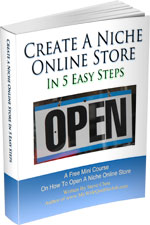
Ready To Get Serious About Starting An Online Business?
If you are really considering starting your own online business, then you have to check out my free mini course on How To Create A Niche Online Store In 5 Easy Steps.
In this 6 day mini course, I reveal the steps that my wife and I took to earn 100 thousand dollars in the span of just a year. Best of all, it's absolutely free!

